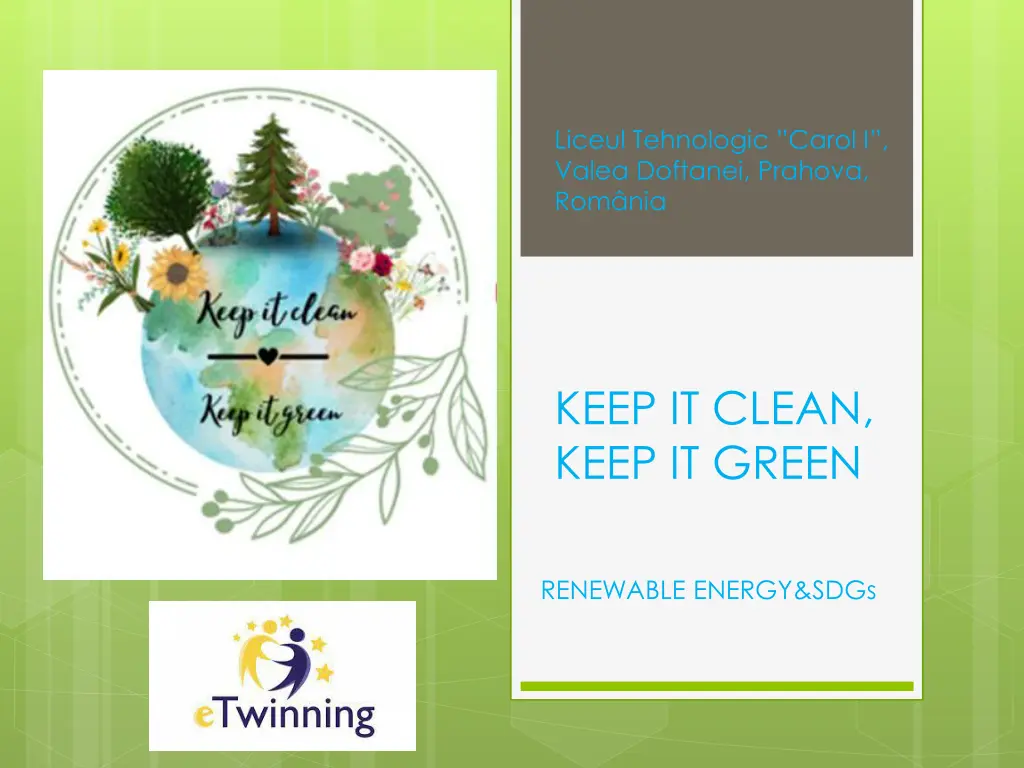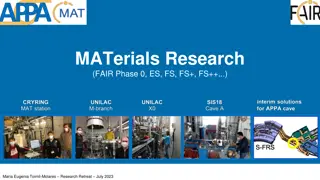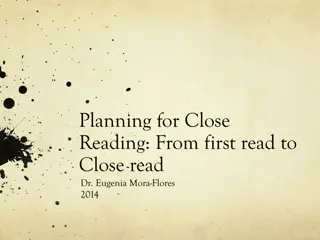
Understanding Sustainable Development Goals and Renewable Energy
Inclusive development and global cooperation in achieving the Sustainable Development Goals, focusing on renewable energy sources like wind, solar, and hydropower. Learn about the types of renewable energy and their significance in promoting a sustainable future.
Download Presentation

Please find below an Image/Link to download the presentation.
The content on the website is provided AS IS for your information and personal use only. It may not be sold, licensed, or shared on other websites without obtaining consent from the author. If you encounter any issues during the download, it is possible that the publisher has removed the file from their server.
You are allowed to download the files provided on this website for personal or commercial use, subject to the condition that they are used lawfully. All files are the property of their respective owners.
The content on the website is provided AS IS for your information and personal use only. It may not be sold, licensed, or shared on other websites without obtaining consent from the author.
E N D
Presentation Transcript
Liceul Tehnologic Carol I, Valea Doftanei, Prahova, Rom nia KEEP IT CLEAN, KEEP IT GREEN RENEWABLE ENERGY&SDGs
What are SDGs? Inclusive Development Inclusive development occurs when adults and children correlate their actions with inclusive values,and compatible initiatives are merged. Global Goals The Sustainable Development Goals (SDGs) or Global Goals are a collection of 17 interconnected goals intended to serve as "a shared blueprint for peace and prosperity for people and planet, now and in the future . Global Cooperation It focuses on human rights, international understanding and cooperation, peace, sustainability and encourages solidarity, intercultural dialogue and peer learning.
Sustainable Development Goals
What is Renewable Energy? In practice, renewable energies are considered energies that come from sources that either regenerate themselves in a short time, or are practically inexhaustible sources. The term renewable energy refers to forms of energy produced by the energetic transfer of energy resulting from renewable natural processes. Thus, the energy of sunlight, winds, running water, biological processes and geothermal heat can be captured by humans using different processes.
Types of Renewable Energy: Wind energy Solar Energy Hidropower Energy
Wind energy Wind energy is the kinetic energy intrinsically associated with the movement of air (wind), a form of renewable energy. Wind energy is a clean and renewable energy but it is intermittent, having variations during the day and season, and even from year to year. Wind turbines operate about 60% of the year in windy regions. By comparison, coal plants operate at around 75-85% of full capacity.
Solar Energy Solar energy is the energy emitted by the Sun, being a source of renewable energy. Solar energy can be used to: generate electricity through solar cells (photovoltaics) generate electricity through solar thermal plants (solar plants)
Hidropower Energy Hydraulic energy is the ability of a physical system (water) to do mechanical work when moving from one position to another (flow). Due to the water cycle in nature, maintained automatically by the energy of the Sun, hydraulic power is a form of renewable energy. From the point of view of hydrology, hydraulic energy is manifested by the force of water on river banks and banks. These forces are maximum during floods due to rising water levels. These forces dislodge sediments and other materials from the riverbed, causing erosion and other destruction.
Renewable Energy in Romania In Romania, the wind energy potential can be best exploited in Banat, on the Black Sea coast, in the mountainous areas and plateaus of Moldova or Dobrogea. Until now, most wind farm projects have been concentrated in Dobrogea. The largest solar energy parks in Romania Bra ov and Sibiu, at the top Hydroelectric power plant from Portile de Iron.



